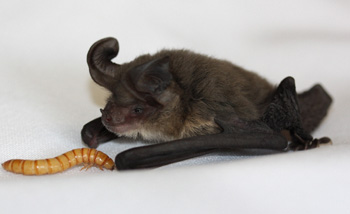I came across a neat study published recently in the American Journal of Physiology - Regulatory, Integrative and Comparative Physiology which examined how bats arouse from hibernation, a period during which their body temperature and metabolism are low. To minimize the high energetic costs of warming up during arousal, bats use solar radiation or take advantage of fluctuations in the ambient temperatures (i.e. environmental).
Researchers studied hibernating long-eared bats (Nyctophilus gouldi) to learn how increasing the ambient temperature (i.e. atmospheric) affected heart rate and metabolism in comparison to arousal in a constant low ambient temperature environment. What they found was that heart rate and metabolism remained low for a longer period of time and gradually increased as the ambient temperatures were likewise increased. In contrast, the animals that actively aroused in low ambient temperatures had higher heart rates and metabolisms.These findings show that passive rewarming does conserve energy and arousal time in the bats resulting in less stress on the cardiovascular system.
I wonder if passive rewarming could help bats afflicted with white-nose syndrome conserve energy and perhaps increase survival?
Source:

